The 2022 Guide to Professional Dental Tools
For many people, a visit to the dentist’s office comes with the familiar feeling of anxiety. Seeing the various, sharp dental instruments laid out on the tray next to you and knowing that your dental hygienist will soon be putting them into your mouth doesn’t exactly inspire the most confidence.
The uncomfortable feeling that accompanies this part of your oral hygiene often stems from the fact that most people are unfamiliar with dental tools and their uses. As you become more familiar with these instruments, your anxiety surrounding their use should gradually decrease. Familiarity leads to comfort, after all.
This brief guide will introduce you to the various dental tools you see at every 6-month visit, as well as some highly-specialized tools you won’t see as often.
Mouth Mirror
From a dentist’s perspective, looking directly into the nooks and crannies of someone’s mouth isn’t always the easiest task. This is where dental mirrors come in.
A dental mirror consists of a small, round mirror attached to a metal stick. This tool allows your dental hygienist to be able to look into spaces that may be hard to see as well as reflect light onto surfaces to get a better look at the state of your teeth. A mouth mirror also makes cleaning and inspecting your teeth easier, as your hygienist can easily push aside the soft tissues of your mouth for easier access to your teeth.
Although some people may find slight discomfort with the foreign object being placed between their cheek and lower teeth, a mouth mirror will not cause pain.

Dental Scalers
Scalers are tools used to clear up plaque and tartar buildup. They are often two-sided, with each side of the instrument containing a narrow hook that your dentist will use to scrape the plaque buildup off your teeth.
Traditional scalers are made of metal and come in varying sizes. Your dentist will manually use a scraping motion to remove buildup, which can cause slight discomfort.
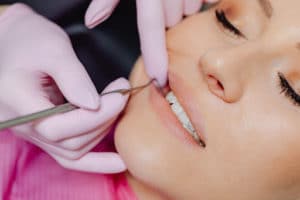
Ultrasonic scalers, on the other hand, will produce ultrasonic vibrations to speedily clean off the buildup in a fast and efficient manner. The ultrasonic scaler will often have a stream of water flowing from the tip to cool off the device, but there is no scraping feeling to produce discomfort.
Suction Devices
You will naturally produce saliva as your hygienist examines your mouth, which can impede their examination. A suction device is a dental tool that quickly vacuums up the air, saliva, excess fluids, and debris located in the mouth, keeping the space clean and dry during your visit.
The saliva ejector is a straw-like, perforated tube that removes saliva in just a few seconds from your mouth. Due to its strong suction ability, the resulting lack of moisture in your mouth may be slightly uncomfortable. If this happens, your hygienist will moisten the area using water.
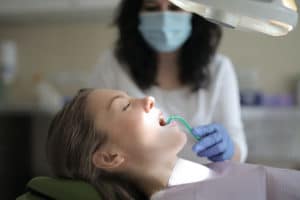
Sickle Probe
A dental tool that often makes people feel uncomfortable is the sickle probe. Like scalers, a sickle probe consists of a thin, sharp hook on the end of a metal stick. Your dentist will examine pockets between your teeth and within your gum tissue for any cavities or tartar.
While the sickle probe looks and sounds scary, it rarely causes any pain. It is sharp, however, and people with sensitive gums may feel some discomfort during the exam.
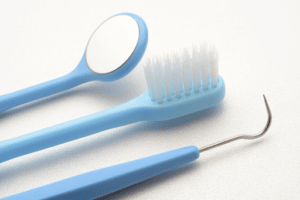
Spoon Excavator
Spoon excavators are used to cut and remove carious dentine that results from tooth decay. It is also used to clean out cavities before filling them.
The tip of the spoon excavator will be bent and flattened into a small, rounded scoop. This instrument may look uncomfortable, but your dentist will administer a local anesthetic to the site to ensure a pain-free procedure.
Burnisher
Dental burnishers are used to polish and contour amalgam fillings or polish composite fillings. The rounded heads of the various burnishers help to emphasize grooves or trim excess material from your fillings.
You will feel pressure from the burnisher, but it will not come with pain or discomfort.

Polishers
After your dentist has finished removing plaque from your teeth, your teeth will be cleaned with a dental polisher as part of your regular checkup. The polisher uses a flavored abrasive paste to polish your enamel and remove any residual plaque or tartar.
This step in dental care leaves you with a shiny smile free of stains and plaque.
You will feel pressure as your dentist polishes your teeth, but no pain is associated with this process.
Dental Drill
Used to drill holes in teeth to prepare them for fillings, the dental drill is probably the tool that causes the most anxiety at the dentist. Many people think that a procedure using a dental drill will be painful, but that simply isn’t true.
Your dentist will apply a local anesthetic to the site and wait until the site is numb to begin drilling. You will feel mild pressure from the vibrations of the drill as well as hear its loud noise, but feel no pain during the procedure.
After the procedure is over and the anesthetic has worn off, you may experience sensitivity lasting for a few days. This is due to nerve agitation and should be treated with ice.
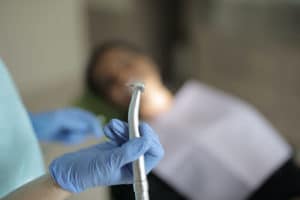
Dental Syringe
For those with a fear of needles, dental syringes may be the scariest items in a dentist’s toolkit. While there is no way to get around their use if your specific procedure requires it, closing your eyes during the actual shot does tend to help. It’s over before you know it!
Dental syringes have fairly large needles and shots will be accompanied by a short sting. Your dentist may be able to apply the numbing gel before the shot to reduce this sting.
Dental Molds
Used to create everything from retainers and mouth guards to crowns and dentures, dental molds have various functions. Your dentist will place an appropriate material inside a dental tray before placing it inside your mouth. As the material hardens in the mold, it begins to form impressions of your mouth structure. The process can take anywhere from 5 to 15 minutes.
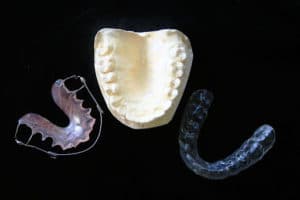
The actual process of applying the mold may be uncomfortable, as dental trays are typically very large. It is also common for dental molds to trigger a gag reflex. To get around this, make sure to sit up straight and lean slightly forward. This should help you avoid most of the gag reflex triggers.
When you’re ready to schedule your next checkup, give Tree City Family Dental a call! And remember, your ability to become more familiar with these dental tools doesn’t stop as soon as you finish this blog. You can always ask your dentist any questions that you may have. They’ll be more than happy to explain exactly what they’re using and what’s going on. We’re here to make sure your dental care is a breeze!

